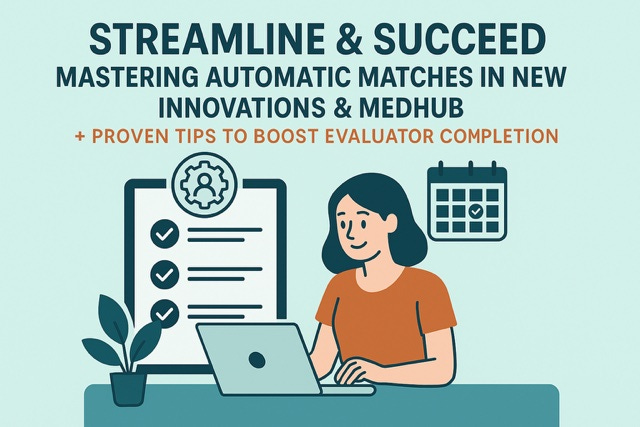Streamline & Succeed: Mastering Automatic Matches in New Innovations & MedHub + Proven Tips to Boost Evaluator Completion
Introduction
In the fast-paced world of medical education administration, managing evaluations efficiently can be a challenge. Fortunately, New Innovations and MedHub provide powerful automatic matching features that simplify this process by linking learners to their evaluators seamlessly. But technology alone isn’t enough. Encouraging evaluators to complete those assessments on time is equally crucial for maintaining high-quality feedback and accreditation standards.
In this post, we’ll explore how automatic matches work in New Innovations and MedHub, why they matter, and share actionable tips to inspire evaluators to complete their evaluations promptly.
What Are Automatic Matches in New Innovations and MedHub?
Both New Innovations and MedHub leverage automation to reduce the administrative workload associated with assigning evaluations.
New Innovations: Automatically pairs learners and evaluators based on rotation schedules, learner assignments, and other predefined criteria. This eliminates the need for manual matching and ensures evaluations are linked correctly.
MedHub: Similarly uses rotation and scheduling data to create automatic matches between learners and their evaluators, streamlining the workflow and reducing errors.
These automatic matches are designed to save time, improve accuracy, and make evaluation management more efficient.
Why Automatic Matches Matter
Automatic matching isn’t just a time-saver. It’s a foundation for a smooth evaluation process.
Saves Time: Eliminates hours of manual pairing, freeing program administrators to focus on their priorities.
Improves Accuracy: By using real-time rotation and schedule data, it minimized mismatches and ensures that evaluations are sent to the correct evaluators.
Enhances Tracking: Makes it easier to monitor which evaluations are pending or completed, helping programs maintain compliance with accreditation requirements.
Common Challenges with Automatic Matches
Despite the efficiency gains, challenges remain:
Evaluators may delay or forget to complete assigned evaluations.
Notification emails or reminders can be overlooked or dismissed.
Some evaluators may lack motivation or fully understand the importance of timely evaluations.
Addressing these challenges is essential to get the full benefit of automatic matches.
Tips & Tricks to Encourage Evaluator Completion
Clear Communication
Send clear, friendly emails before rotations begin, explaining the evaluation process and expectations.
Emphasize the impact of timely evaluations on learner growth and program quality.
Automated Reminders
Leverage built-in reminder features in New Innovations and MedHub to prompt evaluators.
Customize reminder timing and messaging to strike the right balance between helpful and overbearing.
Simplify the Process
Provide short guides or quick tutorial videos to show how easy it is to complete evaluations.
Ensure evaluators can complete evaluations easily on mobile devices, meeting them where they are.
Recognition & Accountability
Recognize and thank evaluators who consistently submit evaluations on time through newsletters or staff meetings.
Share department-level completion rates to foster healthy competition and accountability.
When possible, incorporate evaluation completion into faculty performance reviews or professional development goals.
Leverage Leadership Support
Have program directors and coordinators champion the importance of timely evaluations.
Leadership messaging can reinforce the shared responsibility in maintaining educational excellence.
Create a Feedback Loop
Share learner feedback outcomes with evaluators to show how their input makes a difference.
Highlight stories or improvement or success tied directly to evaluator feedback to motivate continued participation.
Conclusion
Automatic matches in New Innovations and MedHub are game changers in managing evaluations efficiently. However, their true power is unlocked when paired with intentional strategies that motivate evaluators to complete assessments on time. By combining technology with communication, recognition, and leadership support, your program can boost completion rates, deliver meaningful feedback, and support learner success.


